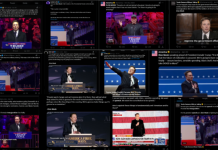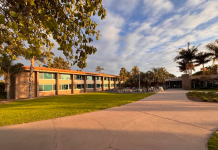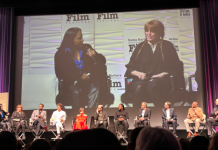Native American mascots seem to have first appeared at the collegiate level in the early 1900s with “fighter,†“bloodthirsty,†and “noble savage†stereotypes being commonplace. In the 1980s, Native American mascots were the most popular because of perceived associations with aggression and violence.Â
Current imagery found at Carpinteria High School reflects Native Americans as a “people of the past,†and misrepresents cultural differences. The images of the “Headdress,†“C,†“Arrows†and particularly the “Eagle Feathers†are all inappropriate. In spite of the vast differences across Native American cultures, most still agree on the sanctity of the Eagle Feathers, which are actual living spiritual entities to native peoples who practice their traditions, as highly regarded to them as the Christian Cross and the Star of David are to their respective religions. Non-ceremonial use of Eagle Feathers is considered sacrilegious, and when public schools use these images in direct connection to Native Americans, it can be considered a form of profanity.Â
There are over 500 federally recognized Nations (tribes) in the United States, as well as thousands more that are not formally recognized by the federal government. Each of these Nations is unique in language, customs and spiritual practice. Our diversity as a people, and the vast contributions we make throughout contemporary American society are not taught or represented anywhere at CHS. Today, we are severely underrepresented in American popular culture, and what little information that the average American has access to about Native Americans is through culturally and historically inaccurate movies and books, representations that are both deficient and discriminatory. Â
Removing Native American mascots and associated imagery has been a major political issue nationwide for over fifty years. The most frequent response we hear to these requests are “This is our culture!†and, “You should feel honored.â€Â The original intention may have been to “honor†us; however, education regarding our cultures and historical violations of them are a more appropriate way to show “respect.â€Â Research by professionals, including the American Psychological Association, the United States Commission on Civil Rights, and the National Collegiate Athletic Association have affirmed the detrimental effects that radicalized mascots have on society, especially youth.
The continued use of offensive imagery after it has been objected to makes the offense intentional, perpetuating attitudes of domination, control and ownership, suggesting, “We know better than you do and you will do what we say, like it or not.â€Â Â
So we ask you, if what most people know about Native Americans is in fact negative or misinformed stereotype, then how can our society understand and teach historical or contemporary Native American cultures and struggles? If people aren’t taught the truth, then how can they act and vote in ways beneficial to Native American people or society as a whole?
If the motivation and purpose is to “honor†Native Americans, then view this as an opportunity for CHS to model positive change in their community. Everyone, especially educators, should know that racism has negative impacts on all of us. The next step for CHS is clear — remove all of the racially offensive imagery and adopt culturally sensitive curricula with the guidance of Native American professionals.Â
Corine Fairbanks is a member of the Santa Barbara American Movement and Monique Sonoquie is a board member of The Indian Graduate Student Alliance.











Comments are closed.